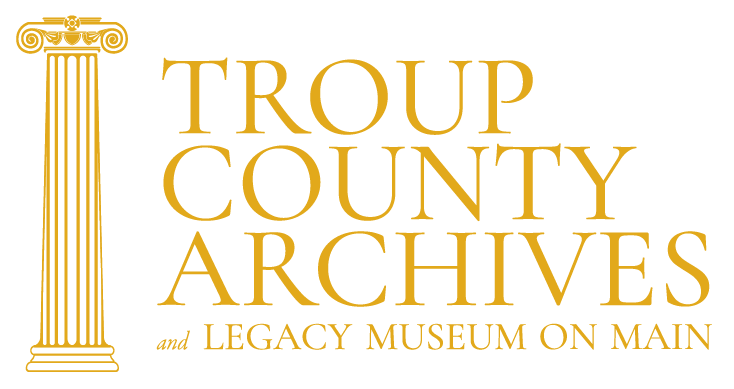CORNBREAD & HOPPIN’ JOHN
The Contributions of the Enslaved Community
The influences for many of the Southern foods we have come to know, descend to us from colonial and antebellum slave quarters. Southern food is derived from a blending of European, Native American, and African origins realized at the hands of enslaved cooks. Southern food is synonymous with what is known as soul food. The term “soul food” became popular in the 1960s and 1970s in the midst of the Black Power movement. One of the earliest uses of the term is found in The Autobiography of Malcolm X. Soul food has become an integral part of tourism in the South and is a multi-billion dollar industry. It is the story of the South and ultimately belongs to the African American communities. Food gives energy. Food sustains. Food is power. Food altered by the enslaved cook would kill the enslaver and refusing to eat on the Middle Passage would have impacted the slave economy as a way to get back those who forcibly enslaved.
During the 1930s, the Works Progress Administration commissioned the Federal Writers Project to collect oral histories from formerly enslaved people. The product of those oral histories gives us three powerful narratives of formerly enslaved peoples who resided in Troup County. Mrs. Celestia Avery, seventy-five years of age during her interview, talked about what she remembered of enslavement and what she learned from her grandmother, Sylvia Heard. Celestia Avery was born in Troup County and her slaveholders were Mr. and Mrs. Peter Heard who owned about five hundred acres and grew cotton, corn, peas, potatoes, and other crops. The enslaved people on the Heard plantation lived in two-room log cabins which had one window and one door. The cabins were furnished with a homemade table, chair, and a roped bed with a mattress stuffed with wheat straw. The cabins of the enslaved peoples were scattered throughout the plantation. Mrs. Avery said that the enslaved people were required to prepare their own meals three times a day and that these meals were prepared in a big open fireplace that was filled with hot coals. The slaveholder did not give much of a variety of food but allowed each family to raise their own vegetables. Each family was given bacon and meal on Saturdays and through the week corn, ash cakes, and meat. A little fruit was added to the ration around Christmas time. Around midday, the big bell rang for lunch.
After work hours the enslaved were allowed to work around their own cabins. The enslaved on this plantation and others like it sold the chickens and food that they raised on their own. The enslaved on the Heard plantation were said to have purchased fiddles with the money they earned from raising chickens and growing vegetables. While the enslaved people on the plantations grew their own crops and animals they were required to give half of everything they raised to their owners.

Lewis Favor, who was enslaved and brought to Troup County by his slaveholder stated that a week’s supply of food consisted of three and one-half pounds of pork or fat meat, one peck of meal, flour, and black molasses. The only meals that they had to prepare were breakfast and supper. Dinner (lunch) was cooked in the plantation kitchen by one of the women who were too old to work in the fields. For dinner, the enslaved workers had some type of vegetable along with fat meat, cornbread, and pot liquor which was served every day. On Sundays, the cornbread was substituted for biscuits. Favor said “It was just too bad for them cause they would have to do the best they could until the time came to get more. When such a thing happened to anyone the others usually helped as far as their limited supplies would permit.”
Before refrigerators, most meats in the Southern diet were preserved and not fresh. The meat was preserved with salt or by pickling. Salted and smoked pork was preferred over pickled meats. By the eighteenth century, wealthy planters prided themselves on their smoked meats. Historian Sam Hillard says “If the ‘king’ of the antebellum southern economy was cotton, then the title of ‘queen’ must go to the pig.” On plantations, enslaved people prepared and cooked the majority of the meat for planters’ tables. Enslaved people were reliant on pork as a meat source. Pork, along with corn, was the primary ration issued to slaves on many plantations. The enslaved community, however, was issued the lesser cuts of the hogs such as the feet, head, ribs, fatback, or internal organs. Thus formed the Southern desire for chitterlings (chitlins), pig’s feet, and ribs.
While sweet potatoes are native to the Americas and were familiar to indigenous American populations, sweet potatoes have a commonality with the yams of West Africa. Enslaved communities applied their traditions and techniques for yams to the sweet potato. Much like maize (corn), sweet potatoes did not require rich soil and therefore could be grown in poor soil which made it ideal for enslaved people and lower-class whites. Sweet potatoes can be easily and quickly prepared by roasting the potato in hot ashes while wrapped in leaves.
Legumes are amongst the world’s oldest crops, they have been found amongst Egyptian tombs and are mentioned in the Bible. The black-eyed pea was introduced to the West Indies from Central Africa in the early 1700s and eventually found its way to the Carolinas. Hoppin’ John is a dish in the Southern culinary tradition that stands out as a staple amongst soul food. The rice and pea dish is made with black-eyed peas, rice, chopped onion, sliced bacon, and seasoned with salt. Many cultures in West Africa find the black-eyed pea to be a symbol of luck. This symbolism found its way to America through the enslaved peoples of Africa and is now a crucial food to have on the menu for New Year’s Day, especially in the Southern United States.
Okra, a staple in Southern food, is native to Ethiopia. The word okra is derived from the Igbo word, okuru. Okra came to North America from the Caribbean by the 1700s. In West Africa, okra was used as a thickening agent for soups and one-pot meals. Enslaved peoples that were allowed to have their own gardens grew okra. By 1824 the famous cookbook The Virginia Housewife featured two stews requiring okra.
The low country of South Carolina was made to provide space for growing rice. Michael Twitty says that the scars of the rice fields can be seen from space. This crop requires those working the fields to know the land and cultivation techniques. European culture was not familiar with rice growing and therefore lacked the knowledge of how to cultivate rice. Enslaved Africans from the rice-growing regions of West Africa were brought to provide the expertise for this agricultural endeavor. As rice was grown in the South the crop found its way into the kitchens and onto the tables of Southerners.
The origin of fried chicken in the Southern United States has been traced to Scottish and West African cuisines. Scottish fried chicken is cooked in unseasoned fat while West African fried chicken is heavily seasoned but battered and cooked in palm oil. Scottish frying techniques and African seasoning techniques were combined by enslaved peoples in the South to create the Southern delicacy known as fried chicken.
The first agricultural census in the United States was taken in 1840. In the nineteenth century, an agricultural census was conducted every ten years. It wasn’t until after 1920 that an agricultural census is taken every five years. — Alex Hughes




